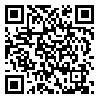Volume 14, Issue 2 (7-2020)
مرتع 2020, 14(2): 272-285 |
Back to browse issues page
Download citation:
BibTeX | RIS | EndNote | Medlars | ProCite | Reference Manager | RefWorks
Send citation to:



BibTeX | RIS | EndNote | Medlars | ProCite | Reference Manager | RefWorks
Send citation to:
Keshavarz E, Ebrahimi A, Naghipoor A. Accuracy of pixel v.s. object-based classification methods in mapping vegetation types (Case study: Marjan Boroujen). مرتع 2020; 14 (2) :272-285
URL: http://rangelandsrm.ir/article-1-906-en.html
URL: http://rangelandsrm.ir/article-1-906-en.html
Department of Range Mamnagement, Faculty of Natural Resources and Earth Science, University of Shahrekord, Shahrekord
Abstract: (4527 Views)
One of the methods of vegetation mapping is using satellite image’s classification techniques. The objective of the present study is to compare the pixel and object-based classification methods on rangelands vegetation mapping at Marjan, Boroujen. To do so, Landsat-8 satellite imagery of 2017 as well as Google Earth images (as reference data by visual interpretation) were used to accurately map six vegetation types: (Astragalus- Bromus tomentelus, Astragalus-Stipa hohenikeriana, Bromus tomentelus-Stipa hohenikeriana) and an agricultural land cover. Then the Landsat images were classified by pixel-based classification (i.e., maximum likelihood) and object-based techniques using TerrSet software. Kernel size (window width) of 3, similarity tolerance of 10, weight mean factor and weight variance factor of 0.5 were used for object-based classification of satellite images. Then, the most important indicators of accuracy assessment, including overall kappa index and overall accuracy extracted from error matrix were calculated to compare the methods. Results indicates that the object-based method with 0.63 overall kappa index and overall accuracy of 0.80 is a superior method relative to the supervised classification method (maximum likelihoodwith overall kappa index of 0.59 and overall accuracy of 0.77. Therefore, object-based classification of remotely sensed images is recommended for vegetation mapping.
Type of Study: Research |
Subject:
Special
Received: 2020/07/29 | Accepted: 2020/07/31 | Published: 2020/07/31
Received: 2020/07/29 | Accepted: 2020/07/31 | Published: 2020/07/31
Send email to the article author
| Rights and permissions | |
 |
This work is licensed under a Creative Commons Attribution-NonCommercial 4.0 International License. |





